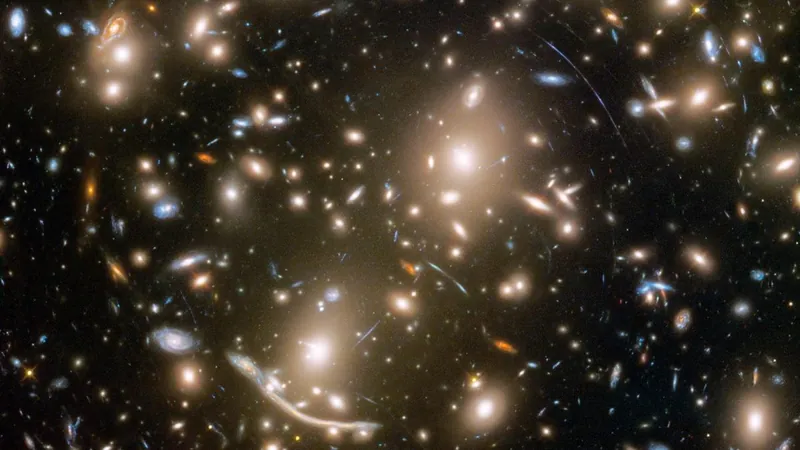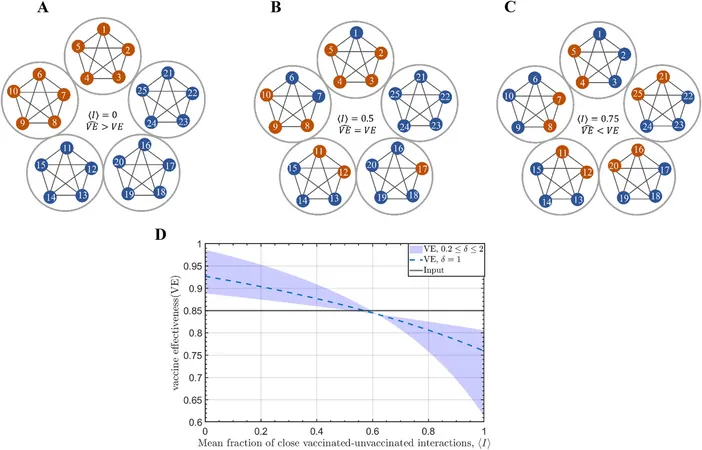
The Universe's Mystifying Speed: New Research Challenges Cosmic Understandings
2025-01-20
Author: Jacques
The Universe's Mystifying Speed
In a stunning twist that might shake the foundations of modern cosmology, recent studies have unveiled discrepancies in the rate of the universe's expansion that far exceed current scientific explanations.
The Hubble Tension
For years, cosmologists have grappled with what is known as the Hubble tension—a significant problem sparked by observations made by the Hubble Space Telescope and more recently by the James Webb Space Telescope. These observations indicate that the universe is expanding at varying rates, creating a perplexing rift in our understanding of cosmic mechanics.
Groundbreaking Paper
On January 15, 2023, a groundbreaking paper was published in *The Astrophysical Journal Letters*, shedding new light on this cosmic conundrum. According to lead author Dan Scolnic, a professor of physics at Duke University, 'The tension now turns into a crisis. This suggests to some extent that our model of cosmology might be broken.'
Understanding the Hubble Constant
To grasp the implications, we first need to understand the Hubble constant, which quantifies the speed of the universe's expansion. There are two primary methods to measure this constant:
1. **Cosmic Microwave Background (CMB)** measurements capture tiny fluctuations from the universe's infancy, dating back roughly 380,000 years after the Big Bang. This method has provided a Hubble constant of about 67 kilometers per second per megaparsec (km/s/Mpc).
2. **Cepheid variable stars** allow astronomers to calculate distances within more recent cosmic history. These stars pulsate at a rate correlated to their intrinsic brightness, making them useful for constructing a 'cosmic distance ladder.' By using these measurements to compare with Type Ia supernovae—remarkable explosions of stars with consistent luminosity—astronomers have derived a higher Hubble constant of approximately 73 km/s/Mpc.
The Research Findings
This stark difference raises eyebrows and has spurred numerous hypotheses from scientists. Some speculate there are hidden systematic errors, while others are building on increasingly precise Cepheid measurements that seem to amplify the discrepancy.
To explore these inconsistencies further, a team led by Scolnic utilized data from the Dark Energy Spectroscopic Instrument (DESI), which meticulously tracks millions of galaxies to trace the universe's expansion history. Their findings revealed a Hubble constant of 76.05 km/s/Mpc—an even greater inconsistency with the earlier Planck measurements.
Despite initial setbacks due to uncertainty regarding the distances involved in their 'ladder,' Scolnic and his team persevered. They revisited the Coma galaxy cluster, which sits around 320 million light-years away—an estimate consistent with earlier work. Their focused analysis resulted in a refined Hubble constant of 76.5 km/s/Mpc, solidifying the gap between current theoretical predictions and what is observed.
A Pivotal Crossroads in Cosmology
We stand at a pivotal crossroads in cosmology, as researchers confront models that have stood for 40 years. 'We’re at a point where we’re pressing really hard against the models we’ve been using for two and a half decades,' Scolnic noted excitedly. 'We’re seeing that things aren’t matching up. This may reshape how we think about the universe, and it’s thrilling!'
As scientists adapt their theories to account for these findings, one thing becomes clear: the mysteries of the cosmos continue to unfold, and groundbreaking discoveries may still lie just around the corner. Will our understanding of the universe be entirely rewritten? Only time will tell, but the quest for answers keeps the excitement alive in the field of cosmology!









 Brasil (PT)
Brasil (PT)
 Canada (EN)
Canada (EN)
 Chile (ES)
Chile (ES)
 Česko (CS)
Česko (CS)
 대한민국 (KO)
대한민국 (KO)
 España (ES)
España (ES)
 France (FR)
France (FR)
 Hong Kong (EN)
Hong Kong (EN)
 Italia (IT)
Italia (IT)
 日本 (JA)
日本 (JA)
 Magyarország (HU)
Magyarország (HU)
 Norge (NO)
Norge (NO)
 Polska (PL)
Polska (PL)
 Schweiz (DE)
Schweiz (DE)
 Singapore (EN)
Singapore (EN)
 Sverige (SV)
Sverige (SV)
 Suomi (FI)
Suomi (FI)
 Türkiye (TR)
Türkiye (TR)
 الإمارات العربية المتحدة (AR)
الإمارات العربية المتحدة (AR)